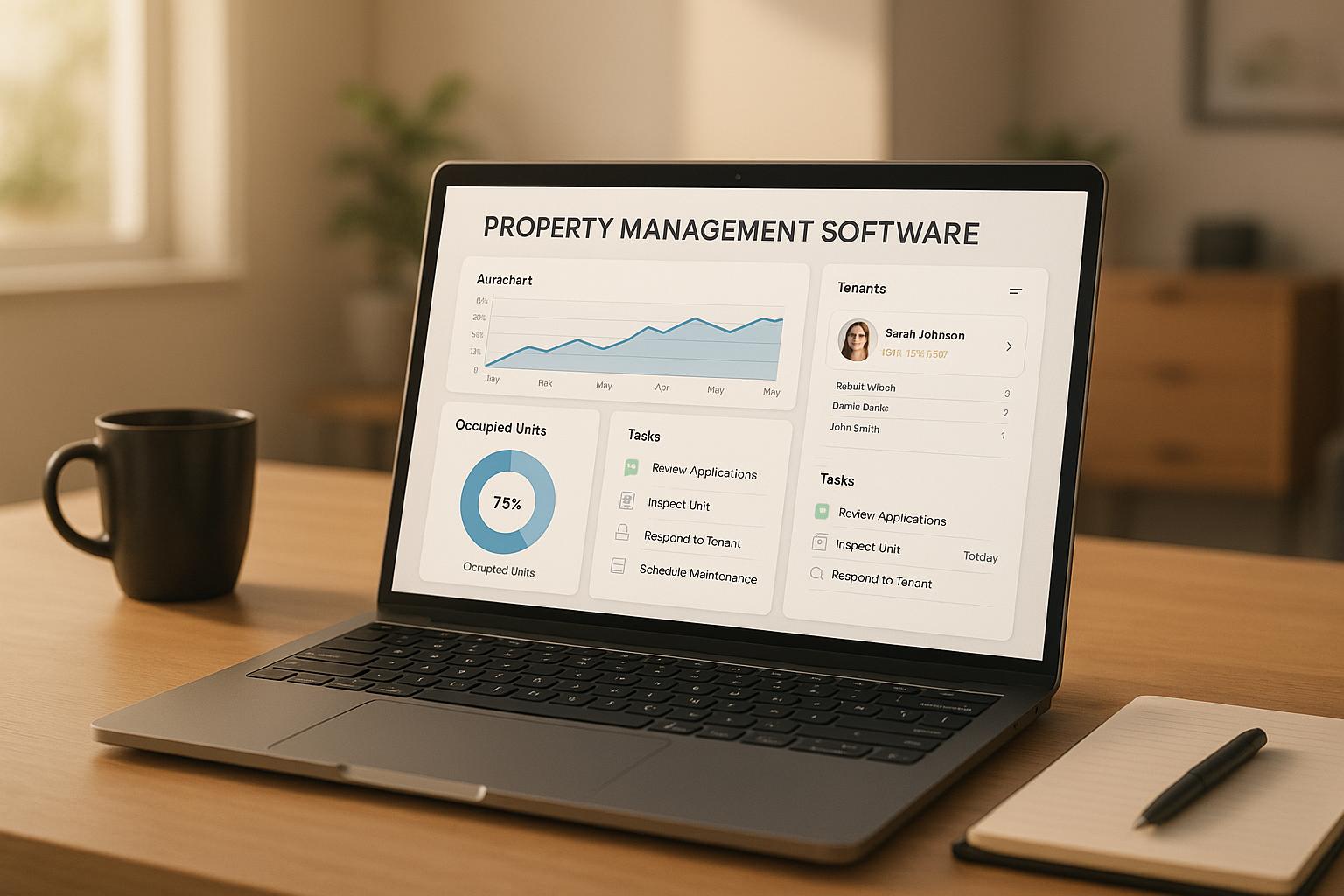Bulk internet deals are a way for property owners to provide internet to all residents in a building or complex through a single contract with an internet service provider (ISP). Here’s the key idea: instead of tenants setting up their own internet, the property owner buys internet in bulk and includes it in rent or as an amenity fee. This approach is convenient, cost-effective, and attractive to renters.
Key Points:
- Immediate Internet Access: Internet is ready on move-in day, eliminating delays for new tenants.
- Cost Savings: Bulk internet can cost up to 50% less than retail rates (e.g., $35/month vs. $85/month for gigabit fiber).
- Resident Satisfaction: 87% of renters consider move-in-ready internet essential, and 77% are willing to pay more for high-speed access.
- Flexibility: Residents can upgrade their internet speed if needed.
- Property Manager Benefits: Simplifies operations, increases revenue (up to $28 per unit monthly), and enhances property appeal.
This model is a win-win: renters save money and enjoy hassle-free setup, while property owners gain a competitive edge and streamlined operations.
Why Managed WiFi Is a Game-Changer for MDUs in 2023 and Beyond
How Bulk Internet Agreements Work in Multifamily Real Estate
Bulk internet agreements streamline how multifamily properties provide internet services to their residents. The process typically starts with a comprehensive evaluation of the property's needs, moves into thorough negotiations with internet service providers (ISPs), and wraps up with a phased implementation. This structured approach ensures that properties can deliver reliable connectivity while addressing the specific needs of their communities.
Assessing Property Needs and Internet Requirements
The foundation of any successful bulk internet agreement lies in understanding the property's unique needs. This involves analyzing resident demographics, internet usage habits, and the current infrastructure.
Fast and reliable internet is a top priority for renters [5]. To meet this demand, property managers need to consider several factors, such as the size and layout of the property, existing technology, and how residents use the internet.
A practical first step is conducting a Wi-Fi audit. This includes checking the infrastructure, identifying dead zones, and gathering feedback from tenants [7]. Managers should also stay informed on market trends and gauge how much residents are willing to pay for upgraded services. For instance, research from Entrata reveals that 84% of renters are willing to spend more on smart amenities, with high-speed internet topping the list of desired features [6].
Contract Negotiation and ISP Partnership
Negotiating a bulk internet contract requires preparation and a clear understanding of the community's priorities. Engaging residents through surveys, town hall meetings, or a technology-focused committee can provide valuable insights into what they need most [8].
To strengthen your position during negotiations, request penetration reports from potential ISPs. These reports highlight current subscription rates and usage patterns, offering a clearer picture of resident demand [8]. Additionally, soliciting multiple proposals can create competitive pressure, allowing you to compare pricing, service levels, and contract terms.
One critical aspect of these agreements is the service-level agreement (SLA). This document outlines performance standards, response times, and remedies if the service falls short. Ensuring that the SLA includes firm terms helps protect the property and guarantees consistent service quality [8]. Once the contract is finalized, the implementation process begins, following a detailed timeline.
Implementation and Setup Timeline
From signing the contract to full implementation, the process usually takes 120 to 180 days [9]. This timeline breaks down into three key phases:
"From contract signing to full implementation, the project typically takes 120 to 180 days to complete. Key steps of the process include an initial site survey, construction planning, fiber installation, equipment setup, and resident activation." [9]
1. Site Surveys and Planning (30–45 days): Engineers assess the property, map out equipment placement, and create detailed installation plans. This phase often uncovers challenges, such as tricky cable runs or the need for additional electrical work.
2. Construction and Installation (60–90 days): This phase involves laying fiber optic cables, installing networking equipment, and setting up infrastructure to deliver service to each unit. External factors like weather, permits, and contractor schedules can impact the timeline.
3. Testing and Resident Activation (30–45 days): Technicians test connectivity in each unit, adjust network settings, and address any issues that arise. Resident activation may happen in stages, with some units going online before others as testing progresses.
Equally important is post-installation support. Property managers should establish direct communication with the ISP's customer support team [9] and familiarize themselves with escalation procedures to quickly resolve any issues residents might encounter.
Cost-Sharing Models for Bulk Internet
Once connectivity structures are in place, property owners decide on pricing models that pass savings directly to residents. Typically, they manage bulk internet costs by either bundling them into rent or charging a separate amenity fee. Both methods aim to simplify pricing while making high-speed internet more affordable compared to standard retail rates.
One of the biggest benefits of bulk agreements is the ability to significantly lower costs, which supports two distinct pricing approaches.
Rent-Inclusive Pricing Model
With the rent-inclusive model, internet costs are folded into the monthly rent, creating a single, all-in-one bill for residents. This option is particularly appealing to renters who value simplicity and immediate internet access without the hassle of setting up separate services. Studies reveal that most renters favor having bulk internet included in their rent, with 87% considering immediate internet availability a necessity and even willing to pay higher rent for it [1][2]. This model works well for properties focused on convenience and predictable monthly expenses. While the internet cost is embedded in the rent, clear communication about its inclusion helps residents recognize the below-market rates achieved through bulk agreements.
Technology or Amenity Fee Model
The amenity fee model takes a different approach by charging residents a separate, itemized monthly fee for internet access. This method ensures cost transparency, showing exactly what residents pay for the service apart from their base rent. Bulk billing agreements in this model often secure high-speed internet at rates up to 50% lower than typical retail prices [4].
This model also offers flexibility. Residents can see the direct value of the service, and property managers can adjust fees independently of rent. Additionally, it allows residents to upgrade their internet speeds by paying the difference directly to the service provider [2]. For property managers, clearly communicating the benefits and providing detailed cost breakdowns is crucial [11]. Offering package options can further enhance resident satisfaction by letting tenants choose services that best meet their needs [11].
Consumer Benefits and Protections
Regardless of the chosen model, both are designed to protect residents. Typically, residents can upgrade their service by covering the difference between bulk and retail rates, while the amount paid to the property owner for the bulk agreement remains unchanged [2].
The National Multifamily Housing Council and National Apartment Association highlight the advantages of these arrangements:
"Bulk billing arrangements are pro-consumer and pro-renter and help support property operations like climate resilience and our shared, long-term goals of improving housing affordability." [10]
Whether the cost is bundled into rent or charged as a separate fee, the priority is to avoid excessive markups. Property managers must ensure that fees don't make the service appear more expensive than current market rates [1]. The ultimate goal is to use bulk purchasing power to deliver better internet service at a lower overall cost, benefiting both residents and property owners. These pricing models lay the groundwork for the broader advantages discussed in the next section.
sbb-itb-58157f8
Benefits for Residents and Property Owners
Structured agreements and cost-sharing models in bulk internet arrangements bring clear advantages for both residents and property owners. These deals create a win-win scenario, boosting affordability and access for tenants while offering property managers a range of operational and financial perks.
Resident Benefits: Lower Costs and Hassle-Free Setup
For residents, the financial savings are hard to ignore. Bulk internet agreements often provide rates that are 50–60% lower than standard retail prices, translating to an average savings of about $14 per month [15][13]. On top of the cost savings, residents gain access to faster, more reliable internet services - options that often outperform what's available in the consumer market [2].
Convenience is another major draw. With immediate connectivity, residents don’t have to deal with the hassle of scheduling installations or waiting for service to start.
Property Manager Benefits: Enhanced Amenities and Streamlined Operations
For property managers, bulk internet agreements are more than just a utility - they’re a strategic advantage. Financially, these deals can increase net operating income (NOI) by approximately $28 per unit each month through discounted wholesale rates [3]. This creates a steady revenue stream, bolstering profitability while meeting tenant demands. In fact, 77% of residents now view reliable internet as essential as utilities like water and electricity, making it a key factor in lease decisions and renewals [3].
Operationally, bulk internet simplifies the move-in process by removing the need to coordinate with multiple internet providers [3]. This streamlined approach not only saves time but also enhances the overall resident experience.
The growing interest in bulk internet solutions reflects broader industry trends. For example, the percentage of new luxury apartment developments incorporating managed high-speed internet has skyrocketed from 5% in 2018 to 80% by early 2021 [16].
Kyle Burrows, manager of multifamily development at Quantum Fiber, highlights the financial upside:
"The number one attraction to bulk fiber is revenue generation. In fact, there is no other internet agreement type that has a greater revenue opportunity for developers than bulk internet today." [1]
Caleb Deerinwater, vice president of fiber sales and distribution at AT&T, underscores its marketing potential:
"Property owners tell us that high-speed internet is a top apartment amenity. Owners can differentiate themselves by marketing broadband as 'part of' or 'included in' their rental fee." [16]
Currently, around 5.6 million U.S. households benefit from bulk billing arrangements [14]. As the multifamily housing market becomes increasingly competitive, bulk internet agreements offer property managers not only immediate operational gains but also a strong position for long-term success in a connected world.
How to Negotiate Bulk Internet Deals
Securing bulk internet deals requires a clear understanding of what residents need, evaluating potential partners, and ensuring compliance with regulations - all while aiming for long-term benefits.
Assessing Resident Needs and Infrastructure
Before diving into negotiations, property managers should start with a detailed assessment of what residents expect and the current state of the network infrastructure. Did you know that 87% of renters expect immediate internet access, and 90% prioritize high-speed connectivity? These statistics highlight how crucial reliable internet is for tenants today [17].
Begin by reviewing your building's layout and inspecting existing wiring. Properties equipped with CAT6, CAT7, or CAT8 wiring are better positioned to handle high-speed internet demands. Clearly label technical components like demarcation points, network racks, and data closets to streamline the process [18].
Next, pinpoint any physical obstacles that could interfere with WiFi coverage. Tools like RF surveys or heat map analyses can help identify the best spots for access points [18]. Bandwidth needs will vary depending on your building's size and tenant demographics. For example, a 200-unit property with many remote workers will likely require more robust connectivity than a smaller building. Communal areas also need secure and seamless internet access [17].
If you're working on a new construction project, it’s wise to collaborate with internet service providers (ISPs) early in the design phase. This approach can lead to better-integrated networks and more favorable contract terms.
Once you understand your property’s technical needs, the next step is choosing the right ISP.
Key Factors in ISP Selection
Choosing an ISP involves balancing speed, reliability, security, and cost [19].
Start by understanding the broadband options available in your area. Fiber-optic internet is often the most reliable and offers the highest bandwidth, making it ideal for properties with heavy connectivity demands. Cable internet is another strong option, though speeds may dip during peak usage times. DSL, which uses telephone lines, offers moderate speeds, while fixed wireless and satellite services can work in specific locations, though their performance may vary [20].
Sarah Jordan, director of sales at Quantum Fiber, emphasizes the importance of internet quality:
"I believe it's important for owners to understand that one of the top amenities residents look for in a community or property is the internet capability. It is imperative that internet service providers deliver a seamless, ubiquitous, customer experience." [19]
Customer support is equally critical. A 2022 NetGear study found that nearly half of participants considered strong in-home WiFi essential, while a third cited unreliable connections as a significant stressor [20]. To gauge an ISP's service quality, check online reviews and ask for references from nearby multifamily properties.
Security is another top priority. Ensure the ISP’s WiFi solutions include robust protections like WiFi Protected Access 3 (WPA3) and regular firmware updates. Jeff Johnson, director of consumer sales for Quantum Fiber's West region, advises:
"While cybersecurity threats are serious, that shouldn't stop owners and builders who want to invest in technology solutions to modernize and smart-equip their communities." [21]
Finally, consider conducting a site survey with potential ISPs. This allows them to assess your property’s layout, size, and materials, helping identify the best technical solutions while building a working relationship [20].
Once you’ve chosen an ISP, it’s time to carefully review contract terms and ensure compliance with regulations.
Reviewing Contract Terms and Compliance
Thoroughly reviewing contract terms is critical, especially when it comes to regulatory compliance. Be familiar with Federal Communications Commission (FCC) rules for Multiple Tenant Environments (MTEs). For example, exclusive contracts with a single ISP are not allowed, and revenue-sharing agreements between landlords and service providers face restrictions [22].
The regulatory landscape is always evolving. In February 2025, the FCC decided not to ban bulk billing agreements in multifamily housing, giving property owners the ability to continue offering streamlined connectivity as a key amenity. As PCMag noted:
"This decision represents a major shift from the agency's initial stance, reflecting a more industry-aligned approach to broadband access in apartments." [12]
Additionally, review FCC and Department of Justice (DOJ) rules on data protection [23][24]. Contracts should clearly outline who owns the installed equipment and specify post-service responsibilities for wiring. Establishing a strong data compliance program with annual certifications can protect your property from legal risks while showcasing professionalism to both ISPs and tenants.
Conclusion
Bulk internet deals offer a win-win solution, delivering high-speed connectivity and simplifying operations for both residents and property managers. By leveraging group purchasing power, these agreements help secure lower costs while making service management far more efficient [26][27].
For residents, the benefits are clear: instant access to high-speed internet without the usual hassles. These plans often translate to significant cost savings and a smoother experience, free from common issues like service interruptions or poor customer support. They meet the growing demand for dependable, fast internet head-on [26].
Property managers also see major perks. Bulk agreements create a steady revenue stream that can increase net operating income (NOI) while cutting down on the headaches of managing individual service accounts. With dedicated support and simplified operations, these deals make life easier for managers while offering a standout amenity that attracts and retains residents in a competitive market.
Recent decisions by the FCC further bolster these agreements, ensuring property owners can confidently negotiate such deals for their communities [25]. This regulatory clarity supports long-term investments in connectivity infrastructure, helping properties stay ahead of the curve and setting a new benchmark for multifamily amenities.
FAQs
What are the benefits of bulk internet deals for residents and property managers in multifamily housing?
Bulk internet deals offer residents access to high-speed, reliable internet at a fraction of the cost of individual plans. This means more savings while enjoying smooth connectivity for streaming, remote work, online classes, and other daily online activities.
For property managers, these agreements streamline operations by bundling services into one contract, cutting down on administrative tasks. Plus, they boost tenant satisfaction by providing a sought-after amenity, which can lead to better tenant retention, higher occupancy rates, and even increased property value. Simply put, bulk internet deals benefit both residents and property managers alike.
How can property managers successfully negotiate bulk internet agreements with ISPs?
To negotiate a bulk internet agreement that works for your property, start by researching internet service providers (ISPs) in your area. Compare their plans, pricing, and services. Make sure you have a solid understanding of current market rates and take the time to identify what your community needs most - whether that’s faster speeds, reliable connectivity, or affordable pricing. Be upfront with providers about these priorities to set clear expectations from the beginning.
Before moving forward, check any existing telecom agreements to ensure there aren’t any conflicts. Dive into your residents' internet usage patterns to help you craft a deal that fits their habits and preferences. Once you’ve done your homework, request comprehensive proposals from ISPs. Look for details on pricing, service levels, and customer support options to see which provider aligns best with your community’s requirements. By following this process, you’ll be in a strong position to secure an agreement that serves both your residents and the property.
What challenges might arise when setting up bulk internet services in multifamily properties, and how can they be resolved?
Introducing bulk internet services to multifamily properties can come with its fair share of hurdles. Common challenges include dealing with technical glitches, ensuring a smooth onboarding process for residents, and providing ongoing support - all without overwhelming the property’s staff. If not managed properly, these issues can cause delays and frustration for both residents and management.
One effective solution is partnering with specialized service providers. These experts can take care of program setup, handle resident support, and manage billing, which significantly eases the burden on on-site teams. With thoughtful planning and the right expertise, property managers can roll out bulk internet services more efficiently, reduce disruptions, and create a better overall experience for residents.


